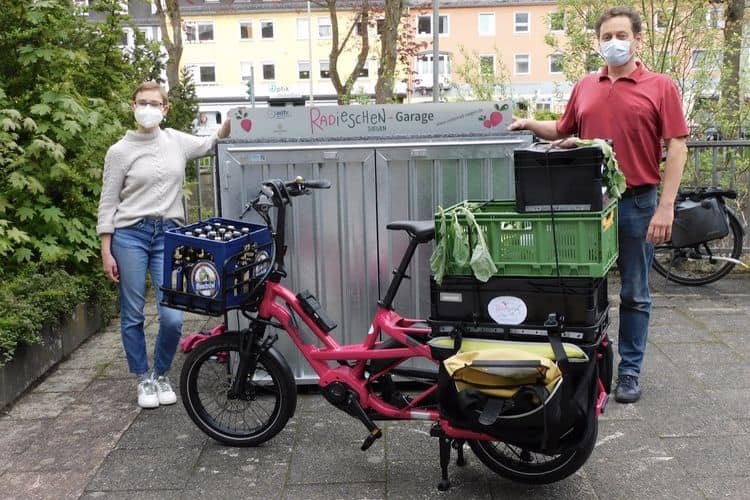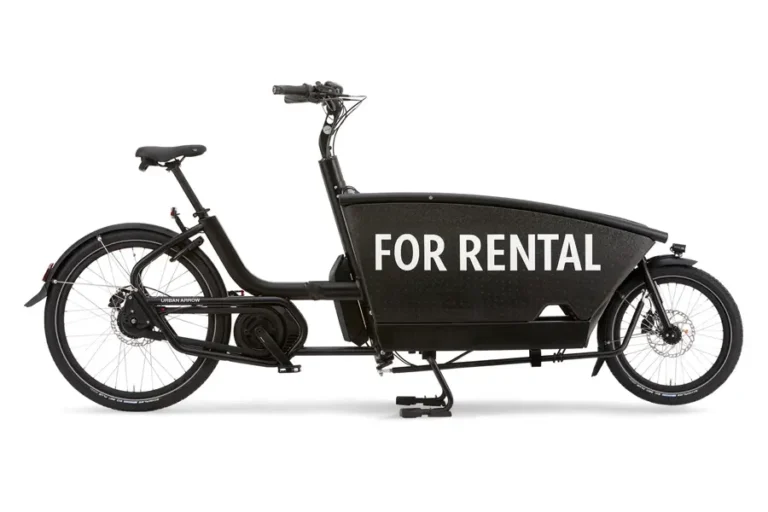At Regen, we work closely with last-mile delivery professionals across Europe and the U.S., and one topic comes up again and again: motor torque. Whether you’re delivering food, groceries, or parcels, torque directly affects how your e-bike performs in the real world — from getting up steep hills with a full load to accelerating smoothly from traffic lights.
Torque, measured in Newton-meters (Nm), is the rotational force produced by the motor. The higher the torque, the easier it is to carry heavy cargo, handle stop-and-go routes, and maintain momentum on tough inclines. In this article, we’ll explain how motor torque impacts delivery performance, compare hub motors vs. mid-drive motors, and help you choose the right torque level for your specific delivery needs.
Urban delivery riders rely on e-bikes with adequate torque to haul food and parcels efficiently through city streets.
In delivery scenarios, high torque translates to two major advantages: quick getaways from a standstill and confident climbing. A motor with higher torque will give you more power from a dead stop (for instance, launching at a green light) and will also help you climb hills faster and for longer without straining . Conversely, a low-torque motor may struggle when a bike is loaded with a courier’s cargo, especially on inclines or when repeatedly starting and stopping in traffic. Here are the practical areas where torque makes a difference for couriers:
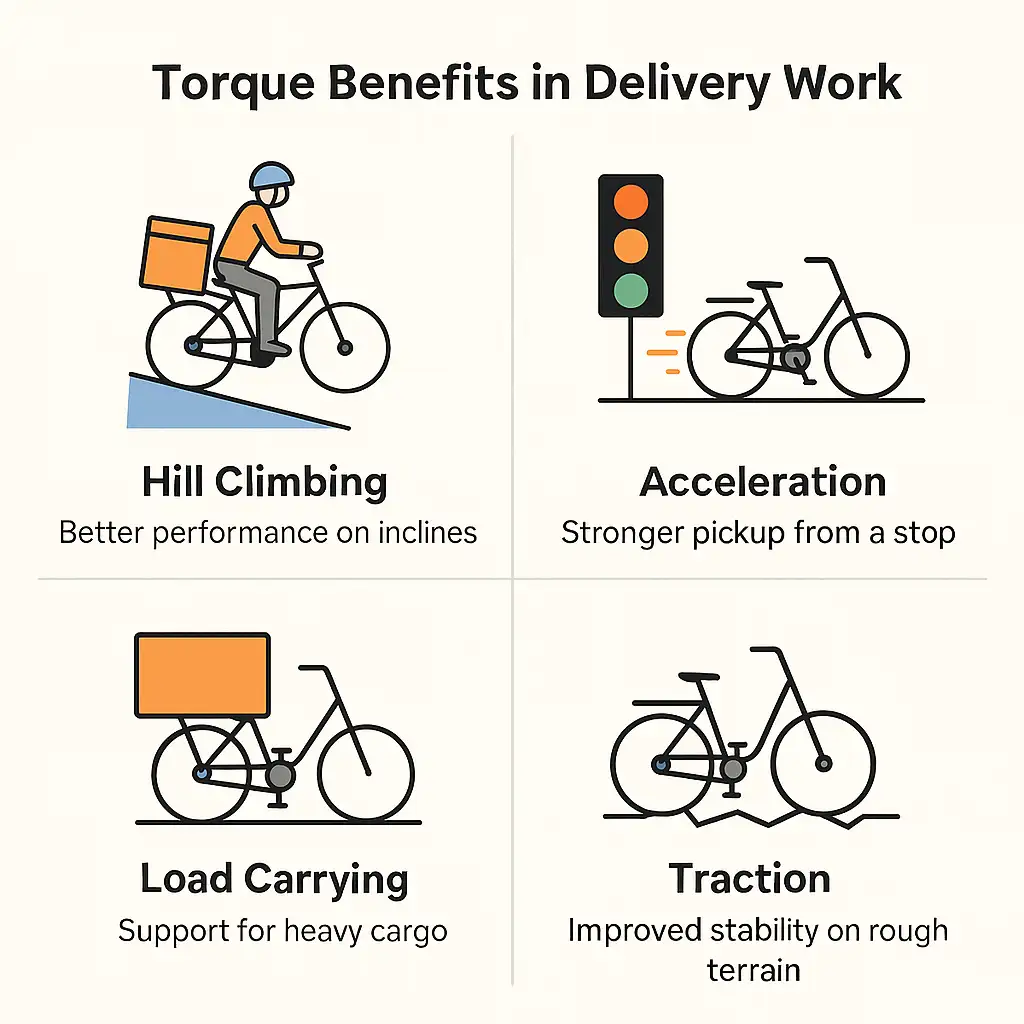
Hill Climbing with Heavy Loads:
Urban delivery riders often face hilly terrain (think of San Francisco’s steep streets or bridges in European cities). Torque is the muscle that helps an e-bike conquer these grades. A high-torque motor can generate the force needed to haul both rider and payload uphill without stalling. In fact, many mid-drive motors on quality cargo e-bikes provide around 75–85 Nm of torque specifically to tackle steep inclines with ease . For example, the Bosch Cargo Line mid-drive (85 Nm) on the Tern GSD cargo bike “climbs every hill with ease,” even with heavy cargo . In contrast, lower-torque hub motors (commonly 40–50 Nm on basic commuter e-bikes) might slow to a crawl or force the rider to pedal hard on steep sections . Couriers in hilly areas consistently cite the value of a torquey motor – it means less pedaling effort and faster, more reliable climbs when carrying food or packages.
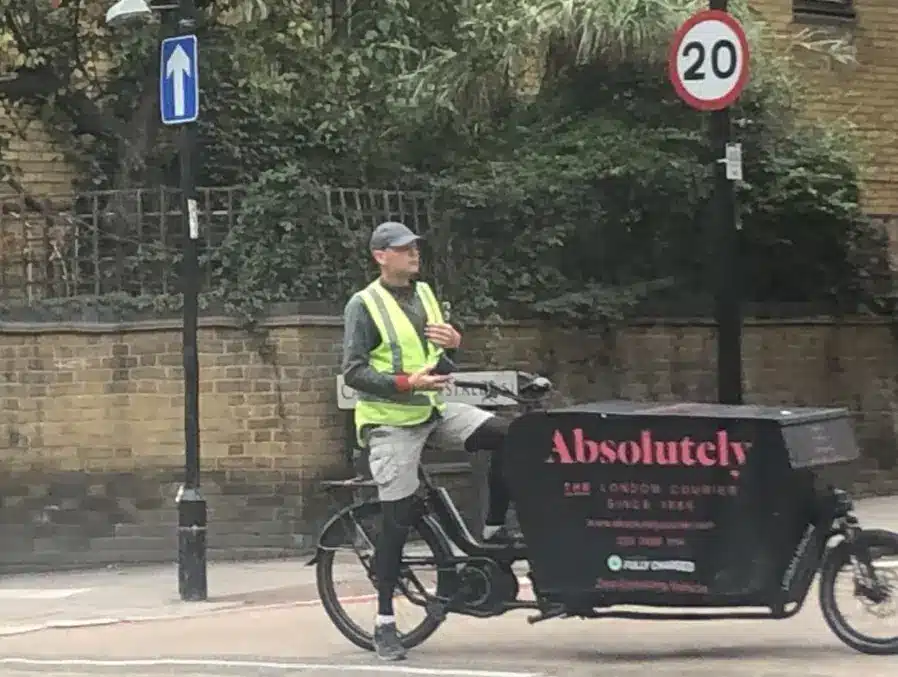
Acceleration and Stop-Start Efficiency:
Delivery work is full of stop-and-go riding – every pickup, drop-off, traffic light, or stop sign means coming to a halt and then accelerating again. E-bikes with higher torque shine in this scenario by delivering a strong surge of power at low speeds. This provides quick acceleration under load, getting the bike back up to speed even with a heavy insulated backpack or cargo box on board . A responsive motor with good torque makes it easier to “zip past traffic” when needed and navigate busy city streets without feeling sluggish. Notably, mid-drive motors with torque sensors excel here: they detect how hard you pedal and apply power instantly, resulting in a smooth but forceful takeoff at each green light. For instance, the high-torque mid-drive in the Tern GSD offers “extra support at low cadences to get you off the line”, meaning it helps jump-start the bike from a standstill even if you’re pedaling slowly with a load . On the other hand, if an e-bike’s motor has lower torque, a courier will experience slower starts and may need to downshift gears more frequently to get moving. In dense traffic with frequent stops, that delay can add up to lost time (and earnings), so torque directly contributes to stop-start efficiency.
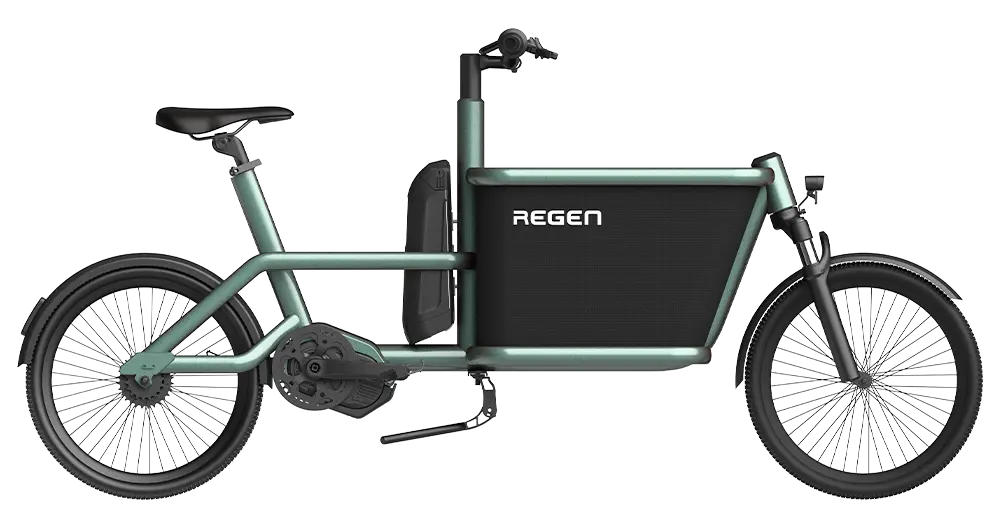
Regen 02 E-Cargo Bike
Look for a Compact, Customisable Front-Loader for Your Brand?
TÜV-tested through past custom projects. Publicly available model—configurable, proven, and ready to scale.
Carrying Capacity and Traction:
Torque also plays a role in how well an e-bike handles weight and maintains traction. A powerful torque-rich motor can better handle the added mass of cargo (pizzas, groceries, packages) without overwhelming the bike’s performance. It can pull away smoothly without requiring excessive pedal force from the rider. Moreover, when starting on an incline or slick road, strong torque at the wheel helps keep momentum, reducing the chance of stalling. Some e-bikes even employ dual motors to maximize torque and traction – for example, dual hub motor setups (with a motor in both wheels) can distribute power and offer all-wheel-drive stability, useful for maintaining momentum on hill climbs . However, these are heavier and consume more battery, so most delivery riders stick to a single, sufficiently torquey motor. The key takeaway is that adequate torque ensures the e-bike remains sure-footed and responsive, rather than bogging down under load.
In summary, torque is the force that underpins an e-bike’s practical performance for delivery work. As one e-bike guide succinctly puts it: “Torque describes the power available at low speeds – higher torque gives more power from a dead stop and helps you climb hills faster”. For a delivery cyclist, that means quicker starts, easier hills, and maintaining speed with a full cargo. Next, we’ll compare how different motor types deliver torque and what that means for real-world use.
Hub-Drive vs. Mid-Drive Motors: Torque and Performance
One of the biggest choices in e-bikes is between hub-drive motors and mid-drive motors. Each design affects how torque is delivered and felt by the rider, especially in demanding conditions like deliveries. Let’s break down the differences:
Hub-drive motors are built into the wheel (usually the rear) and apply torque directly to it. In the U.S., many delivery riders prefer hub motors because of their simplicity and the ability to use a throttle for instant acceleration from a standstill—particularly useful when loaded or stuck in traffic. A 750W hub motor can provide up to 90 Nm of torque, enough for short hills and city deliveries. However, on long or steep climbs, they can overheat or drain the battery quickly. This is largely because they can’t take advantage of the bike’s gearing, unlike mid-drives. We’ve covered this technical distinction in more detail in our article on the differences between direct-drive and geared hub motors.
On the other hand, mid-drive motors sit at the crank and power the bike through its chain and gears. This design lets the motor leverage the full gear range, meaning it can climb steep inclines more efficiently—even with just 250W power. That’s why in regions like Europe, where throttles are restricted and motors are limited to 250W, mid-drives are often the preferred choice. Brands like Bosch and Yamaha, despite being “250W” nominal, regularly achieve up to 85 Nm of torque through smart gearing. If you’re interested in how torque translates to performance in real-world riding, check out our FAQ on motor torque.
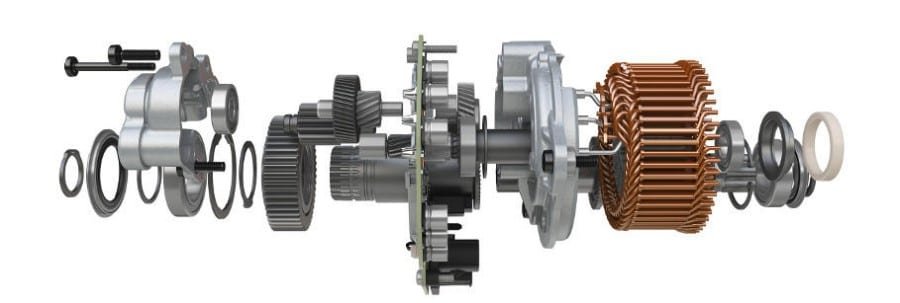
Mid-drives also offer a more natural ride feel thanks to torque sensors, and better balance, since the motor sits at the bike’s center. They don’t usually include throttles, but the immediate power delivery while pedaling makes up for it—especially for delivery riders who need precise control in traffic. We’ve shared more about how these systems behave in stop-and-go city use in our scenario-based motor guide, which might help you visualize the difference based on your daily routes.
In short: if your work involves frequent stops, moderate terrain, and value simplicity, a hub-drive might serve you well. But if you face hilly routes, heavy loads, and want efficient torque at low speeds, a mid-drive system may be worth the investment. For more technical comparisons, see our full article on Mid-Drive vs. Hub Motors.
Torque in Popular Delivery E-Bike Models
Delivery riders choose a variety of e-bikes, from purpose-built cargo bikes to affordable folding e-bikes. Here we compare a few popular or illustrative models, focusing on their motor type and torque, to see how they stack up for real-world delivery use:
| Model | Motor Type | Torque (Nm) | Key Features | Ideal For |
|---|---|---|---|---|
| RadWagon 5 | Hub | 90 | 750W geared rear hub; throttle; good starting power; moderate hill-climbing | Urban couriers with moderate inclines |
| Tern GSD | Mid-drive | 85 | Bosch Cargo Line; strong pedal-assist; climbs steep hills easily | Heavier loads & hilly cities |
| Engwe L20 | Mid-drive | 100 | 250W legal motor; tuned for extreme low-speed torque; EU-compliant | EU riders needing torque under 25 km/h |
| Aventon Level.2 | Hub | ~50 | 500W motor; torque sensor; fast on flat terrain; lighter design | Flat-city couriers; speed-focused riders |
| Juiced HyperScorpion | Hub | ~95+ | 1000W peak; throttle only; very fast acceleration; heavy and borderline legal in some areas | Power users needing raw speed & strength |
- Rad Power RadWagon (Hub Motor, 90 Nm): The RadWagon is a long-tail cargo e-bike favored by many couriers and families alike in the U.S. It uses a 750W rear hub motor. In the latest RadWagon 5 iteration, Rad Power Bikes upgraded the motor to output 90 Nm of torque. This is a notably high torque figure for a hub motor, and it directly benefits delivery use: riders report that the RadWagon can start from a stop briskly even when loaded with 100+ pounds of cargo, and it handles moderate hills reasonably well for a hub drive. The smaller wheel diameter (22-inch wheels) on the RadWagon further helps multiply the torque at the wheel, improving hill climbing . With its throttle, a RadWagon rider can get a bit of extra push to get moving, which is great when balancing a heavy load. That said, on very steep hills or long climbs, the RadWagon’s hub motor will slow down and draw a lot of power – it’s effective up to a point, but not as “unstoppable” as a mid-drive cargo bike. Rad Power also equips their motors with cadence or basic torque sensors, so the assist is smooth but not as instantaneous or torquey as premium mid-drives. Still, at an affordable price and with a high weight capacity, the RadWagon (and its sibling, the RadRunner utility bike) are common sights for gig delivery, showcasing that a well-tuned hub motor with ~80–90 Nm can do the job for most urban needs. (Spec: 750W geared hub, ~90 Nm torque, Class 2 throttle + pedal assist).
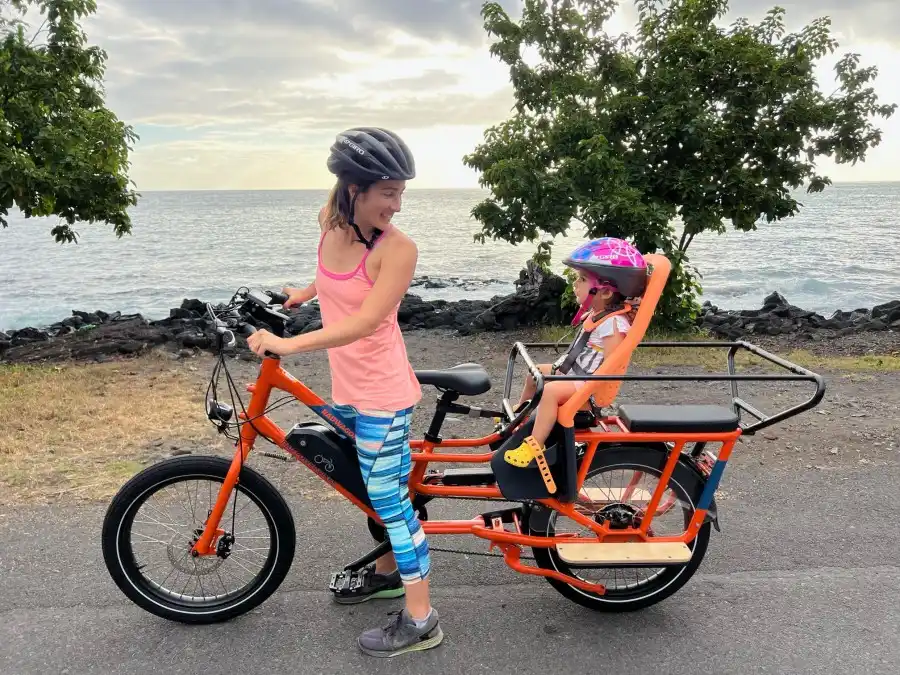
- Tern GSD (Mid-Drive, 85 Nm): The Tern GSD is a compact cargo e-bike popular in both the U.S. and Europe among those who need to carry serious loads. It comes with a Bosch mid-drive motor (Cargo Line series) that delivers up to 85 Nm of torque with pedal assist . This bike is often cited as a gold standard for cargo hauling. For a delivery rider, the GSD’s mid-drive means it can tackle extremely steep hills or bridge ramps without breaking a sweat – the motor’s torque is applied through the gears, so even a 15% incline with a loaded bike is feasible by dropping to a low gear and letting the motor churn out its max torque. Bicycling Magazine’s review noted the GSD “gets you over any hill easily” and has “extra support at low cadences to get you off the line”, highlighting how its torque benefits both climbing and quick starts . Because it’s pedal-assist only (Class 1 in most regions), the rider does need to pedal, but the torque sensor ensures that even a light press on the pedals results in a strong boost – ideal for stop-and-go riding. The GSD (and similar mid-drive cargo bikes like the Riese & Müller Load, Urban Arrow, or Yuba Spicy Curry) often feature high-capacity batteries or dual-battery setups, since they encourage longer range usage. In Europe, these mid-drive cargo bikes abide by the 25 km/h assist limit, but within that speed they offer full torque, making them very capable for urban deliveries (albeit at a premium price point). Many professional delivery services and postal services in Europe use mid-drive cargo e-bikes for reliability and power. (Spec: Bosch Cargo Line mid-drive, 85 Nm torque, pedal assist, 400% rider input support).
- Engwe L20 Cargo E-Bike (Mid-Drive, 100 Nm at 250W): This is a newer example from Europe/UK: Engwe (a brand known for budget e-bikes) released the L20, a cargo-capable mid-drive bike with a 250W motor rated at a surprising 100 Nm of torque . This shows how mid-drive design can achieve high torque even under EU power limits. In a YouTube review by a delivery rider, the Engwe L20’s climbing ability was praised – it could handle steep urban hills thanks to that torque and a proper gear range. This kind of model is aimed at couriers and small businesses in Europe who want a strong hill-climber without violating e-bike laws. While 100 Nm is an outlier in this class (most mid-drives are 50–85 Nm), it demonstrates that torque can be tuned via gearing: the motor likely uses internal reduction gearing to max out low-speed torque. The trade-off might be a lower top speed or quicker fade of assist after 25 km/h, but for city deliveries that’s a reasonable compromise. (Spec: Mid-drive 250W, ~100 Nm torque, pedal assist with torque sensor).
- Aventon Level.2 (Hub Motor, ~50 Nm with Torque Sensor): Not all delivery riders need a cargo bike – many use commuter e-bikes. The Aventon Level.2 is a popular commuter model (often seen with Uber Eats riders in the U.S.) that has a 500W rear hub motor with a built-in torque sensor. Its torque output is around 50 Nm (estimated, as Aventon doesn’t publish an exact figure, but user reports and similar models suggest ~50–60 Nm). This level of torque on a lighter-weight e-bike (~60 lbs) is sufficient for moderate hills and brisk acceleration on flat ground. Riders like the Level.2 for its balance of price and performance – it can “flatten those hills” to an extent and offers a smoother power delivery thanks to the torque sensor. However, compared to the true cargo haulers, a 50 Nm hub motor will struggle on very steep grades, especially if the rider is carrying a heavy backpack. Many Level.2 users doing deliveries note that they avoid the steepest routes or add extra pedal effort on hills. On the flip side, the bike has a higher top assist speed (28 mph in Class 3), which is useful for covering distance quickly. This illustrates a point in torque vs speed: the Level.2 prioritizes speed (and is geared for it) over brute torque, which suits flat-city couriers. (Spec: 500W hub, est. ~50 Nm, Class 3 up to ~45 km/h, torque sensor PAS).
- Juiced HyperScorpion (Hub Motor, 95+ Nm): For an example at the high-power end, the HyperScorpion is a moped-style e-bike often used by delivery riders in places like New York. It has a 1000W peak hub motor with reported torque over 95 Nm. This bike can accelerate extremely fast and climb hills with throttle only, but it’s technically a gray area in legality due to power and speed. Some gig couriers choose such models for the raw performance – they can hit 30+ mph and haul cargo with ease – but they sacrifice some maneuverability (weight ~100 lbs) and draw down the battery quickly. It’s not street-legal in Europe and only fits within Class 2/3 in the U.S. if configured properly. The high torque here is a double-edged sword: great for speed and power, but it can also chew through components and requires strong brakes and sturdy build to handle it. (Spec: Hub motor ~1000W, ~95 Nm torque, throttle + pedal assist, moped design).
As these examples show, there’s a range of torque outputs in e-bikes used for deliveries. Cargo-focused bikes tend to pack 80 Nm or more to ensure they can manage heavy loads (often mid-drive to leverage that torque efficiently), while commuter and affordable e-bikes might have 40–60 Nm which is fine for lighter-duty deliveries on flatter terrain. When choosing an e-bike for delivery, riders must balance torque vs. speed vs. cost: higher torque mid-drives usually cost more, but deliver better low-speed power and hill ability; hub drives give more speed per dollar and often include throttles, but may lag on steep hills or heavy loads.
Real-World Courier Experiences
To ground this discussion, what do actual delivery riders say about torque and motor performance? Real-world feedback often mirrors the specs:
- Mid-Drive Praise: Couriers who have used mid-drive e-bikes frequently praise how effortlessly they tackle hills and how natural the assist feels. On forums, a rider in a hilly city noted that their mid-drive bike “could climb practically anything with the gear down, and it made long hills feel like flat ground”. The consistency of power was a big plus – the motor didn’t overheat or cut out on extended climbs the way some hub motors did. Many also point out the benefit of balanced weight and easier handling of mid-drive bikes, which can make a difference when weaving through traffic with a heavy load (no motor weight in the wheel to throw off steering). The absence of a throttle on most mid-drives isn’t a dealbreaker for these riders, as the torque sensor responds to any pedal pressure, giving an almost immediate push when you start from a stop. In fact, some describe it as feeling like having “bionic legs”, where the harder they pedal, the more the bike accelerates, smoothly and predictably – very useful in stop-start downtown traffic.
- Hub-Drive and Throttle Benefits: On the other hand, many delivery cyclists in North America favor hub-drive bikes for their simplicity and throttle. A common scenario is a courier with a heavy backpack or delivery box who appreciates being able to start from rest using the throttle for a second to get the bike rolling, then pedaling. This is easier on the knees and avoids wobbling when starting with weight. One rider doing Uber Eats on a hub motor bike said the throttle “is a lifesaver when I’m exhausted at the end of a long shift or when I need to dart across an intersection quickly”. Hubs with decent torque (e.g. 50–80 Nm) are generally seen as sufficient on city streets – riders report they can keep up with traffic and tackle gentle hills fine. But some have learned through experience that not all hub motors are equal: a cheap e-bike with a low-torque motor might bog down on inclines, causing the rider to dismount or heavily pedal. In contrast, those with a higher-torque hub (like the Rad and Juiced bikes mentioned) feel almost like small mopeds, able to “zip past traffic” and maintain around 20 mph even with some cargo . There is also an affordability and maintenance angle: couriers mention that replacing a hub motor wheel or a controller is relatively inexpensive, whereas mid-drive systems (Bosch, Shimano, etc.) can be costly to repair if something goes wrong. For a rider in a rough-and-tumble urban environment (potholes, possible crashes, huge mileage), this is a factor – some stick to hub bikes as a “workhorse that I can fix easily”.
- Europe vs. U.S. Differences: European delivery cyclists often use either cargo bikes provided by companies or their own e-bikes which are usually 250W mid-drives. They comment that these bikes have plenty of torque for city use – the Bosch/Yamaha systems “launch strongly up to the 25 km/h limit, then you’re on your own”. The frustration can be the speed cap rather than torque. Still, others have resorted to tuning or unofficial higher-power kits to get more performance (at the expense of legality). In the U.S., by contrast, it’s common to see delivery riders on faster, more powerful e-bikes (some essentially electric mopeds). The general sentiment is that U.S. riders enjoy the extra power and torque for getting around quickly, whereas EU riders rely on efficient use of torque within legal limits and often ride in more bicycle-friendly city infrastructures. Regardless, both acknowledge torque as key: whether it’s a legal 250W mid-drive with 85 Nm in Europe or a 750W hub with 80 Nm in the U.S., torque is what gets the load moving and combats gravity.
- Ideal Torque Ranges: When asked, experienced couriers often suggest aiming for at least50–60 Nm of torque for effective urban delivery, especially if any hills are involved. This corresponds to mid-tier hub motors or entry mid-drives. For heavier cargo or very steep cities, they recommend bikes in the 70–90 Nm range (typically mid-drives or high-torque hubs) . Anything above that is considered gravy or for special cases (like pedicabs or trikes carrying huge loads). As one rider put it: “40 Nm might be okay on a light e-bike for flats, but if you have bags of food and hit a hill, you’ll wish for more. Closer to 80 Nm and up, and hills become much less intimidating.” This aligns with manufacturers’ categories: light e-city bikes often have ~40 Nm, while cargo and eMTB motors have 75–90 Nm for dealing with heavy duty demands .
- Battery Life Considerations: Another practical point couriers make is that using a lot of torque (i.e., riding in max assist, tackling big hills or using throttle frequently) can drain the battery faster. High torque output means high current draw. Mid-drive riders mitigate this by shifting gears to keep the motor efficient, whereas hub motor users simply have to carry a bigger battery or a spare. A mid-drive delivery biker noted that even with lots of starts and hills, their Bosch system was efficient enough to get through a full shift on one charge, whereas a friend’s hub-driven bike needed a midday top-up. Therefore, torque and efficiency go hand in hand – a system that delivers torque smartly (using the drivetrain, sensors, etc.) can save energy. This is worth considering when choosing a bike for long shifts: sometimes a more expensive mid-drive with high torque can actually be more economical if it uses less battery per mile, reducing the need for multiple batteries.
So, What Should You Choose?
From everything we’ve heard—across cities, climates, and work styles—torque consistently comes up as one of the top priorities for professional delivery riders. But how much is enough? And does it matter whether that torque comes from a hub motor or a mid-drive?
That’s what we explore next.
In our follow-up post, we break down real-world recommendations based on city terrain, cargo weight, and budget—so you can decide what torque level and motor type actually fits your delivery work.
Reference
- Bicycling Magazine – Tern GSD Review (2020): Discussion of the Tern GSD cargo e-bike’s features, including its Bosch Cargo Line 85 Nm mid-drive motor that “climbs every hill with ease” and provides extra support at low cadences for quick starts .
- Rad Power Bikes – RadWagon 5 Specifications: Official specs for the RadWagon 5 cargo e-bike, featuring a 750W geared hub motor with 90 Nm of torque and a throttle, illustrating the high-torque hub approach for carrying heavy loads .
- ElectricBikeReview.com – RadWagon 4 Review & Comments: Independent review noting the RadWagon’s 80 Nm hub motor performance. Includes expert comments on EU vs US versions, explaining that EU-spec 250W hub motors have lower torque and more limited hill-climbing compared to high-torque mid-drives like Bosch .
- BoltBikers – How to Choose an Electric Bike for Delivery: A guide for delivery riders recommending mid-drive motors for their efficiency and balance. It notes that for deliveries, mid-drive motors are generally preferred, especially on varied terrain (hills) .
- Whizz (GetWhizz) – Best E-Bike for DoorDash Deliveries: Blog post highlighting the Whizz delivery e-bike (500W hub motor). Emphasizes that its acceleration and torque help riders “zip past traffic” and complete deliveries faster in congested areas .
- Fucare Bikes – Dual Hub Motors vs. Mid-Drive: A Deeper Dive: Article comparing motor systems, noting that mid-drives excel at “torque-heavy power” on steep climbs via gear integration, whereas hub motors (even dual) can provide throttle-only climbing and faster straight-line speed at the cost of efficiency .
- ENGWE – E-bike Torque vs Speed: Understanding the Balance: Explains that more torque = faster acceleration and easier hill climbing. Gives examples of Engwe e-bikes with 75 Nm torque handling steep inclines and heavy loads with less strain , and how 75 Nm improves responsiveness for quick speed control .
- BikeRide.com – Understanding E-Bike Torque: Provides a clear definition of torque in e-bikes: “higher torque will give you more power from a dead stop and help you climb hills at a faster speed.” Recommends ~40–50 Nm for light e-bikes and 75 Nm+ for cargo or mountain e-bikes carrying heavier loads .
- FavoriteBikes – Torque and Efficiency Guide: Technical guide confirming that at low speeds motors generate maximum torque for strong acceleration, and that torque drops as speed increases. Reinforces that high torque = easier steep hill climbing, whereas high efficiency gives longer range .
- OutdoorGearLab – RadCity 5 Plus Review (via EBR forums): Notes that the RadCity 5 Plus hub motor (~40 Nm) lacks the torque for serious hills . Illustrates that not all hub e-bikes are equal – lower torque models may struggle on inclines, underscoring the need to choose adequate torque for the delivery environment.


